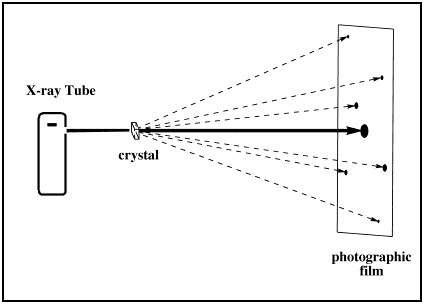
The first X-ray experiment was performed by
Max von Laue in
Munich in 1912. X-rays had been discovered 17 years earlier by
Roentgen but there was, at the time of von Laue's work, no agreement on exactly what X-rays were.
There was some experimental evidence that X-rays were high energy particles (like electrons); other
data indicated that X-rays might be waves. Von Laue surmised that, if X-rays were waves, they
would have rather short wavelengths (on the order of 1 x 10-10 m) and the dimensions
of the objects in crystals would be the appropriate size to produce the phenomenon of
diffraction. He exposed a crystal of copper sulfate to X-rays and
recorded the diffraction pattern on a piece of photographic film:


